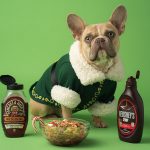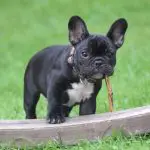Finding the right dog for your life
Let’s face it. While there is a good bit of info about choosing a dog on the internet, most of it is written by people trying to SELL you a dog. So let’s start with, I’m NOT trying to sell you a dog. This series of posts are intended for informational purposes only. So let’s get started.
Things to Consider:
For the purpose of these discussions I will be examining the world of pure bred dogs. While there are many wonderful mixed breed dogs out there waiting to be adopted, I’m going to be teaching you what I know about the pure bred dog. In a future article, I will also discuss the individual dog and how to assess temperament. That discussion will also apply to the mixed breed dog.
1) Consider your life style. Are you a couch potato? Or a marathon runner? Looking for a dog to work your cattle or share your popcorn? The answer to these questions will have a HUGE effect on the type of dog you are looking for.
2) Consider your preferences. Look at a lot of pictures of various breeds of dogs. Make a list of the ones you find attractive. Then research the function/intelligence level/basic temperament of these breeds.
3) Smarter isn’t always better. A few years ago a research psychologist published a great book about dog intelligence. He rank ordered many dog breeds into 70 rankings. The Border Collie landed on the top as the smartest dog. A lot of people equated smarter with better, ran out and bought a B.C. only to realize they had made a big mistake. Border Collies are very needy in terms of exercise of both the mind and the body. Without plenty of either, their intelligence allows them to find all sorts of trouble to get into. Meanwhile, I was living in an apartment, going to graduate school. I bought a little Lhasa Apso. My little darling was ranked #68 of 70. She was not the sharpest knife in the drawer. But she WAS a wonderful companion for me at the time. It didn’t take much to keep her mind occupied. She did require a lot of grooming, but that was always a welcome break from studying for me. So we were a good match. And that is much more important than her intelligence level.
4) Pay close attention to what the breed was originally intended to do. It may have been over 100 years since the Lhasa Apso was used to guard Tibetan palaces, but trust me, they still bark at strange noises. If you don’t like a dog that barks, make sure you don’t get one of the guarding/hunting breeds.
Overall All Breed Information
The following Breed Descriptions are based on the breeds of dogs accepted by the AKC. This is not an endorsement of the AKC nor am I interested in comments in favor of or bashing this organization. It is what it is and for my discussion it is a good place to start. Start here, and do further research on the groups or breeds that interest you.
The American Kennel Club divides dog breeds into the following groups: Sporting Breeds, Hound Breeds, Working Breeds, Terrier Breeds, Toy Breeds, Non-Sporting Breeds, and Herding Breeds. I will first make some very general comments about each of these groups. Please note I am painting with a wide brush here. There are of course breed variations within each group and individual variations within each breed. This is just a place to start.
Sporting Breeds: These are breeds of dogs that were originally used for flushing up and or retrieving game. These are for the most part, your bird dogs. Most of these breeds are very active. Many are very bright. Most are very trainable, but not all of them. There is a good bit of variation in breed standards in this group so do your research. For example, in this group is the Golden Retriever (generally considered to be very bright) and the Irish Setter (generally considered to be not so bright).
Hound Breeds: These are breeds of dogs that were originally intended for hunting. They are mostly divided between sight hounds and scent hounds. In general sight hounds are more active than your scent hounds, but there are exceptions to this. In general, most of these breeds enjoy a good bark. They love to hunt and want to let the world know where they are hunting. They tend to be sweet natured dogs (if you aren’t a rabbit) but many can also be quite stubborn.
Working Breeds: These dogs were bred to work. What that work entails varies greatly from breed to breed. In general, these are your personal and herd protection dogs. Some were rescue dogs from antiquity. Because their breed functions varies greatly, so do their breeds temperaments. In general, these are bright athlete dogs that are very active and can be very strong-willed. Pick out one of these dogs for your family with great care.
Terrier Breeds. These dogs were bred to seek and destroy vermin. Sometimes the vermin they were seeking and destroying were MUCH bigger than the terrier. What that means is that in general these are very active and tenacious little dogs that can be quite a handful. Oh, but aren’t they cute???
Toy Breeds: These are little dogs that were bred as companion animals, usually for royalty. They are almost always adorably cute and sweet. Toys can be a bit quirky and a bit slow to learn important lessons like potty training. But they were bred to make your heart melt every time you look at them and they do.
Non-Sporting Breeds: This is a “catch all” category for dogs that didn’t really fit anywhere else. The breeds in this category vary greatly. You will have to research the specific breed here.
Herding Breeds. These dogs were uhm…bred to herd livestock. Yup. In general, these dogs are very bright, very active and NEED a JOB. Throw one of these into your backyard for hours on end a lone and you WILL be SORRY. Consider carefully what job you have for one of these guys before you bring it home.


